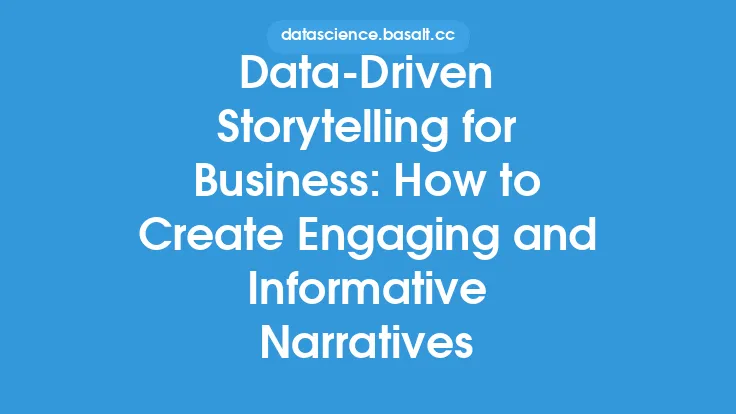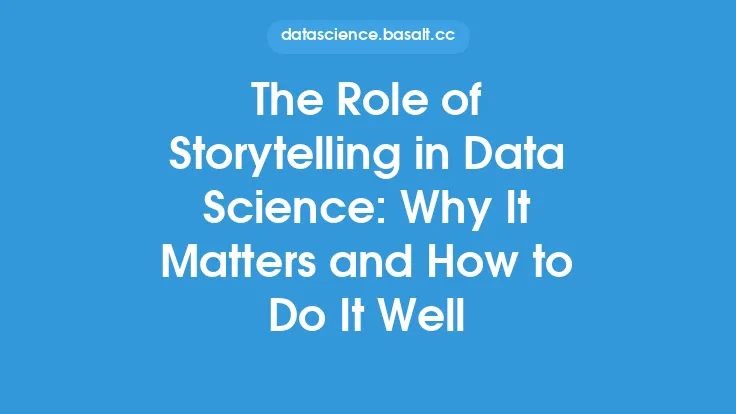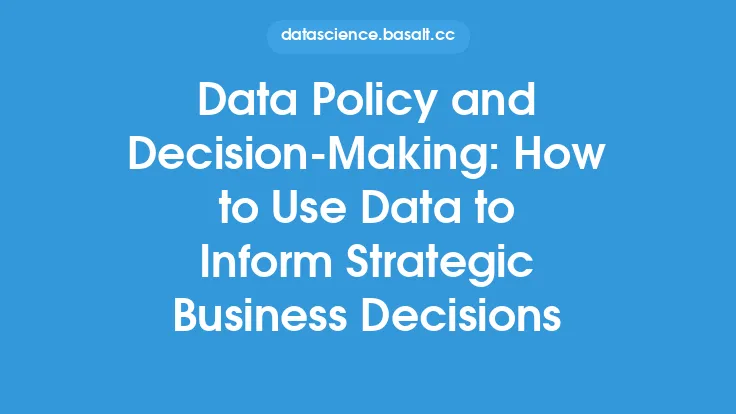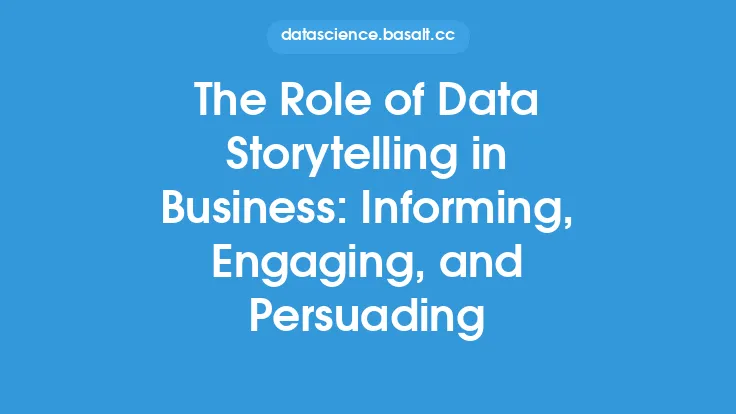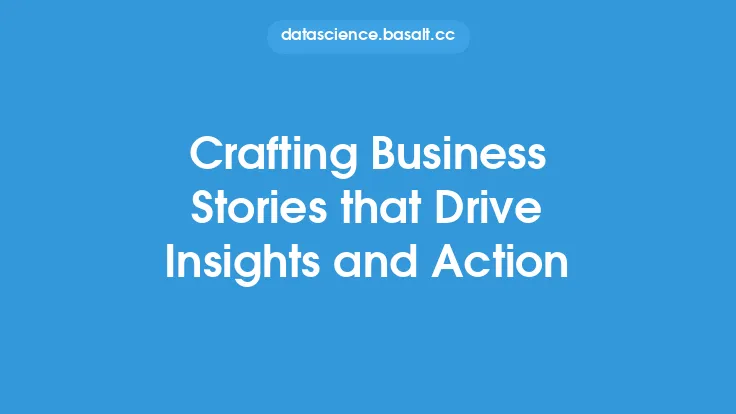As a business leader, you're likely no stranger to the concept of data-driven decision making. With the sheer volume of data available to organizations today, it's easier than ever to gather insights and inform strategic choices. However, the ability to effectively communicate these insights to stakeholders, team members, and executives is a crucial aspect of driving action and achieving business objectives. This is where data storytelling comes in – a powerful approach to presenting complex data in a way that's engaging, easy to understand, and actionable.
Introduction to Data Storytelling
Data storytelling is the process of using narrative techniques to convey insights and trends in data. It involves transforming complex data into a compelling story that resonates with the audience, rather than simply presenting numbers and charts. By using storytelling principles, business leaders can create a clear and concise narrative that highlights key findings, identifies opportunities, and drives decision making. Effective data storytelling requires a combination of technical skills, such as data analysis and visualization, as well as soft skills, like communication and presentation.
The Benefits of Data Storytelling for Business Leaders
So, why is data storytelling so important for business leaders? For starters, it enables them to communicate complex data insights in a way that's easy for non-technical stakeholders to understand. This helps to ensure that everyone is on the same page, and that decisions are made based on a shared understanding of the data. Data storytelling also helps to build trust and credibility with stakeholders, as it demonstrates a clear and transparent approach to data analysis and decision making. Additionally, data storytelling can help to drive action and engagement, as it presents data in a way that's engaging, interactive, and memorable.
Key Elements of Effective Data Storytelling
So, what are the key elements of effective data storytelling? First and foremost, it's essential to have a clear and well-defined narrative. This should include a clear structure, with a beginning, middle, and end, as well as a compelling storyline that highlights key findings and insights. The narrative should also be supported by relevant data visualizations, such as charts, graphs, and tables, which help to illustrate key points and trends. Additionally, effective data storytelling requires a deep understanding of the audience, including their needs, interests, and level of technical expertise. This helps to ensure that the narrative is tailored to the audience, and that the language and terminology used are accessible and easy to understand.
Technical Skills for Data Storytelling
From a technical perspective, data storytelling requires a range of skills, including data analysis, data visualization, and programming. Data analysis involves working with datasets to identify trends, patterns, and insights, using tools like Excel, SQL, or statistical software. Data visualization involves presenting data in a visual format, using tools like Tableau, Power BI, or D3.js. Programming skills, such as Python or R, are also essential for data storytelling, as they enable business leaders to automate tasks, create interactive visualizations, and build custom dashboards.
Best Practices for Data Storytelling
So, what are some best practices for data storytelling? First and foremost, it's essential to keep the narrative simple and concise, avoiding technical jargon and complex terminology. The narrative should also be focused on the key findings and insights, rather than getting bogged down in details and nuances. Additionally, effective data storytelling requires a range of visualizations, including charts, graphs, and tables, which help to illustrate key points and trends. It's also essential to use interactive and dynamic visualizations, which enable stakeholders to explore the data in more detail and ask questions.
Common Challenges and Pitfalls
Despite the many benefits of data storytelling, there are also some common challenges and pitfalls to be aware of. One of the biggest challenges is ensuring that the narrative is accurate and trustworthy, as stakeholders may be skeptical of data that's presented in a way that's overly simplistic or misleading. Additionally, data storytelling requires a range of technical skills, which can be a barrier for business leaders who are not familiar with data analysis or programming. Finally, effective data storytelling requires a deep understanding of the audience, which can be time-consuming and challenging to develop.
Real-World Examples and Case Studies
So, how are business leaders using data storytelling in real-world scenarios? One example is a company that used data storytelling to identify opportunities for cost savings in their supply chain. By analyzing data on shipping routes, inventory levels, and supplier performance, the company was able to identify areas where they could streamline their operations and reduce costs. Another example is a marketing team that used data storytelling to measure the effectiveness of their campaigns, using data on website traffic, social media engagement, and customer conversions to identify areas for improvement.
Conclusion and Future Directions
In conclusion, data storytelling is a powerful approach to presenting complex data in a way that's engaging, easy to understand, and actionable. By using narrative techniques, business leaders can create a clear and concise narrative that highlights key findings, identifies opportunities, and drives decision making. As the field of data storytelling continues to evolve, we can expect to see new tools, technologies, and techniques emerge, which will enable business leaders to create even more compelling and interactive stories with data. Whether you're a seasoned data analyst or just starting out, data storytelling is an essential skill for anyone looking to drive action and achieve business objectives in today's data-driven world.
